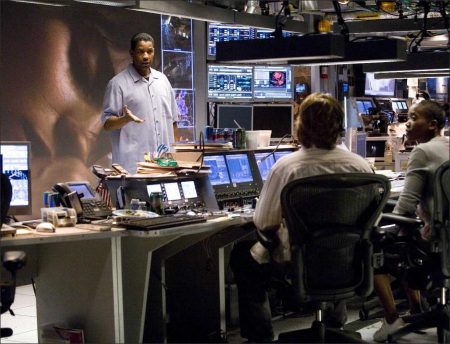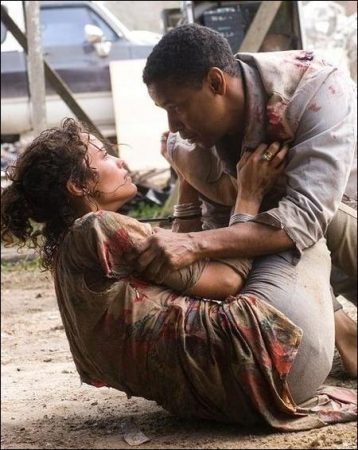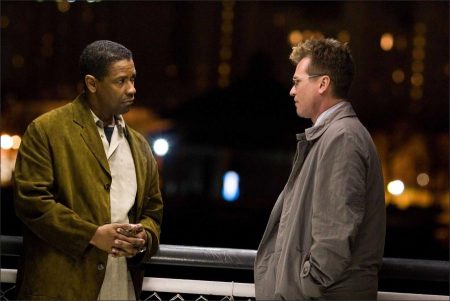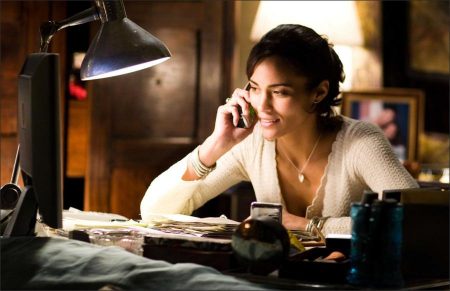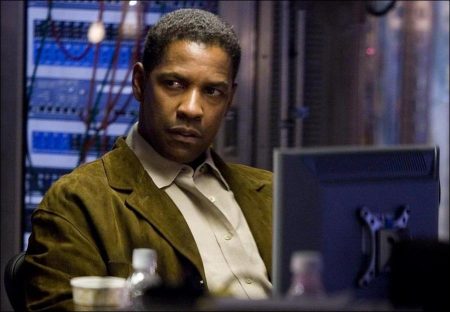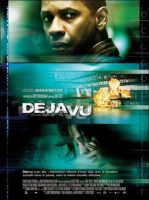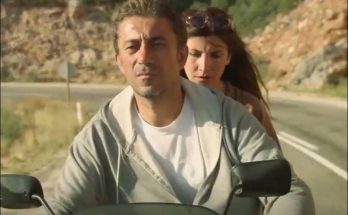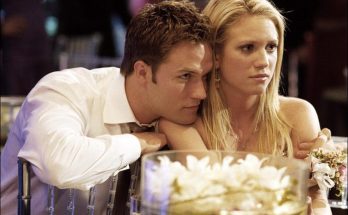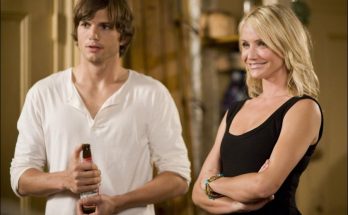The Mystery of Deja Vu: What Do We Know?
While the action elements of DÉJÀ VU are all about realism, the unconventional underpinning of the thriller is an inquiry into just what the feeling of déjà vu really is – and what it might reveal about the workings of the universe.
Déjà vu, though a common phenomenon, has defied easy explanations by biologists, psychiatrists, neurologists and physicists. Current theories, as the filmmakers discovered, range from the psychological to the downright fantastical and include:
Some neurologists believe that déjà vu happens when the brain latches onto a single detail – a smell, sight or sound – the familiarity of which causes it to confuse the past and present for a split second.
Doctors point out that many patients with temporal lobe seizures experience the feeling of déjà vu so it may originate from unexpected stimulation to that part of the brain.
Some psychoanalysts believe déjà vu is a form of “wish fulfillment” – in which deep-seated psychological desires come to the fore, as they usually do in dreams, but in waking life.
Those who subscribe to the theory of reincarnation believe detailed episodes of déjà vu are evidence of memories of previous lives. Scientists on the fringes of new discoveries in quantum physics have suggested that déjà vu could be the result of parallel universes that accidentally intersect when the fabric of space-time is disrupted.
It is the latter theory that plays a vital role in the development of DÉJÀ VU’s suspenseful and thought-provoking twists. In order to get a better handle on what pioneering physicists believe about how time really operates, Jerry Bruckheimer and Tony Scott went right to the source: they picked the mega-sized brains of several world-class physicists including Dr. Brian Greene, an expert on String Theory and a professor of physics at Columbia University who has written such popular explorations of general relativity and quantum mechanics as The Fabric of the Cosmos and The Elegant Universe.
Says Bruckheimer, “We wanted to do our best to really explore what the various characters do in DÉJÀ VU, including the scientists in our Time Window Lab. I’ve made a career of telling stories that take you inside a world you’d never be a part of, yet, we make you part of it through this movie. Balancing science fiction and science fact can be tricky and complex, but we wanted to start this dialogue in DÉJÀ VU and open our eyes to possibilities that perhaps are not as far fetched as they seem.”
To get inside the surprising world of quantum physics, Bruckheimer and Scott sat down with Dr. Greene and asked him to explain some of theories behind time travel and parallel universes to them as simply as possible. Greene, in turn, simplified the concepts on a blackboard for Bruckheimer and Scott. He explained that we live in a world in which we are not always aware of the tricks our minds play on us when it comes to the medium of time.
For example, he noted that when you look at yourself in a mirror that is 8 feet away, you might think you’re seeing yourself right now, but you are actually looking at yourself as you existed 16 nanoseconds ago! (That 16 nanoseconds is the time it takes for light to reflect off your face at the mirror and come back.) So, in a sense, you are actually looking into the past. We do it all the time. It happens whenever you look up in the night sky to admire the North Star – even though it appears to be twinkling right at you, in fact you are actually peering at the star as it was 630 years ago. So one thing we know for sure is that time isn’t always what it seems to be.
Getting into even more mind-bending concepts, Green explained how some physicists now believe, based on the latest evidence, that there exist an infinite number of parallel universes in the cosmos — and that we just happen to lead our lives in one of them, unaware of the others. Once considered pure science fiction, the theory of parallel universes has now been directly implicated by recent cosmological observations.
Though there are many different views of how parallel universes might operate, one of the most elegant explanations comes from an exciting new frontier in contemporary physics: String Theory. String Theory posits that the universe consists of tiny strings or membranes that vibrate in 11 dimensions. In this theory of a multi-dimensional cosmos, parallel universes could be separated from our own by as little as a fraction of a millimeter. Greene uses the analogy that our universe and everything in it might be just one thin slice of bread in an inconceivably vast loaf.
Though most of these theories still leave many questions unanswered, the potential they suggest for time travel and manipulation of the past or future is mind-boggling. As Dr. Greene says, “The realization there’s more to the universe than we are directly aware of helps us appreciate our place in the cosmos.”
Continues Bruckheimer, “Understanding parallel universes was one of our biggest challenges in developing the DÉJÀ VU story. We wanted to know by consulting the experts in this area how we could convince audiences that there really are parallel universe – that, even as I am sitting here right now, there might be yet another Jerry talking somewhere else saying something completely different. An then how do you bridge these parallel universes? That’s another area we explore in DÉJÀ VU.”
At the Time Window Lab, things become more peculiar as the scientists utilize “wormholes” to journey across the gap between past and future. Wormholes, also known as “Einstein-Rosen bridges” (based on a paper by Albert Einstein and Nathan Rosen in which they proposed a bridge that could travel between a black hole and white hole at a speed faster than light) and “space tunnels,” are a hypothetical feature of space-time that could provide a shortcut between one point in time and another. Wormholes, similar to black holes, are created by sources of intense gravity that cause the space-time fabric to fold or distort. Just as a worm can get to the other side of an apple by journeying through its center, wormholes could provide a quick path to an alternate place in this or other universes.
There Is No Place Like New Orleans
Production of DÉJÀ VU was set to begin in Fall of 2005 amidst the watery beauty and inimitably soulful atmosphere of New Orleans. But in August of 2005, the unprecedented power of Hurricane Katrina struck, devastating the city and rocking the nation. While recovery efforts began, the film was put on indefinite hold. At first Jerry Bruckheimer and Tony Scott considered looking elsewhere in the United States for an appropriate location. But they both agreed: from the unique architecture of the French Quarter to the funky swamps of the bayou, there was simply no other place on earth like New Orleans. And it seemed that now New Orleans needed people to stand by it more than ever.
“I was already in love with New Orleans, having made several films here,” says Bruckheimer. “Tony had never been there before, but he too fell in love with the all the French and Spanish influences. The city has a distinct culture that is unforgettable, and Tony and I both knew this was right for the story of DEJA VU. New Orleans deservedly became a character in the film.“
Unable to give up the dream of shooting in the city, the filmmakers stayed in close contact with the New Orleans Film Commission as recovery efforts progressed, hoping a time would soon come when they could safely return. By early 2006, the city had begun to rebuild its infrastructure, and the production of DÉJÀ VU didn’t waste a second, becoming the very first film to start shooting in New Orleans post-Katrina – and setting an example for other productions that New Orleans was open again for filming.
Continues director Tony Scott, “We had adapted the DÉJÀ VU script to take place in some of the most interesting New Orleans locations and show the incredible landscape through the story’s car chases and ferry sequences. DÉJÀ VU is set against a city in a time warp, a beautiful time warp, much like New Orleans.”
The New Orleans locals were especially supportive of DÉJÀ VU bringing the excitement of the movies back to their city. ”While filming on the streets of New Orleans, everyday locals would come up to me and thank us for bringing this film here, for helping us revitalize their city in need,,” recalls Bruckheimer. “Tony and I, and the cast and crew felt extremely proud to be part of the rebirth of the city and the return of the film industry there.”
When the production held an open casting call for extras at a mall in Metarie, the community demonstrated overwhelming interest as over 5,000 people showed up ready to take part. The production also garnered the support of many local government organizations including the Coast Guard, National Guard, New Orleans Police Department, New Orleans Fire Department, EMS, Department of Transportation, Port of New Orleans, Army, and others that lent assistance when needed, whether it be closing down a bridge for a car chase or securing an area for a large pyrotechnic explosion.
Just being in New Orleans during those early days of its recovery was extremely moving for cast and crew. Says Denzel Washington, ”I was truly inspired by the people that I met in New Orleans who were fighting to get back their lives. Katrina was a tragedy beyond imagination. I got in my truck everyday and just took rides around the city by myself to see mile after mile of devastation. I’ll just never forget what I witnessed.”
Besides providing job opportunities and priming the local economy, DÉJÀ VU also left its mark behind in subtler ways. When shooting at night on the ferry at Algiers, the art department had to put up additional lighting on the Missisippi Bridge to be able to see the New Orleans skyline in its glory. Many locals commented that the bridge never looked so good since Katrina. New large signage was custom-made on the ferry docks, and the owners of the docks liked them so much they ended up leaving it all there.
Production also coincided with the emotional first Mardi Gras to take place after Katrina. A decision was made to film one of the parades at night, and on February 26th the DÉJÀ VU crew took to world-famous Canal Street to capture the Endymion Krewe parade in progress with multiple cameras. During the sequence nothing was altered — Mardi Gras was filmed as it was, celebrating even in the midst of tough times.
Key to the mystery and action in DÉJÀ VU is the shattering ferry blast that kicks off Doug Carlin’s investigation. So once in New Orleans, the filmmakers leased the Alvin Stumpf Ferry, a massive, 225-foot long, 75-foot wide, 50-foot high boat that typically runs between the Canal Street and Algiers ferry landing on the Mississippi River.
For a little over a month the cast and crew of DÉJÀ VU made the ferry and the Mississippi River their daily work site. In close quarters cars exploded, guns were fired, and hundred of background players re-created the chaos of a major disaster. Then came the pivotal moment: a simulated pyrotechnics explosion with flames that would rage 350 feet high, all undertaken in the middle of the Mississippi River, under the Crescent City Connection bridge, while Tony Scott and his camera department targeted fifteen cameras on the cataclysm. (In order to prevent undue alarm at the flaming spectacle, New Orleans media warned the public ahead of time.)
The aftermath of the deadly explosion was equally complex to capture, with key action moments filmed in the Turning Basin of the Mississippi River. Additional elements of the ferry sequence aftermath were shot in the calmer waters of a giant tank on a soundstage. Here the filmmakers and the stunt crew had complete control over the elements as they sank cars and shot the principal actors in action with underwater cameras.
Says Bruckheimer, “It was really something to see 20 stunt people jump from the ferry at different levels — some from as high as 25 feet. Several of the stunt people lit themselves on fire before jumping. It looked so realistic it was incredible.”
Deja Vu (2006)
Directed by: Tony Scott
Starring: Denzel Washington, Val Kilmer, Paula Patton, Jim Caviezel, Bruce Greenwood, Adam Goldberg, Matt Craven, Erika Alexander, Elle Fanning, Enrique Castillo
Screenplay by: Terry Rossio, Bill Marsilli
Production Design by: Chris Seagers
Cinematography by: Paul Cameron
Film Editing by: Jason Hellmann, Chris Lebenzon
Costume Design by: Ellen Mirojnick
Art Direction by: Drew Boughton
Set Decoration by: Rosemary Brandenburg
Music by: Jared Lee Gosselin, Harry Gregson-Williams
MPAA Rating: PG-13 for language, brief sexuality, a scene of drug use.
Distributed by: Buena Vista Pictures
Release Date: November 22, 2006
Visits: 122
